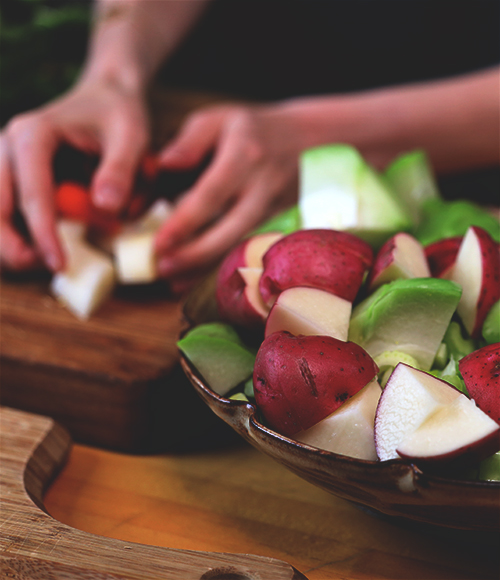Diary-Free Pesto Alla Genovese

Traditional basil pesto is made with a pestle and mortar. With our busy lifestyles, this recipe is adapted to following the same method, with the help of a food processor. National yeast is also used instead of parmesan, to give a cheesy flavor without the dairy. Once you get the hang of making the traditional flavor combinations, you’ll be equipped with the skills to make swaps with the nuts or greens you have on hand.
Also, pestos are a great way to use herbs that droop quickly (aka soft herbs or greens that sat on your counter too long) that you’d like to use before they go brown. Once preserved in herbs and citrus, it will stay fresh in your fridge for at least a week. I love to use it for lunch grain bowls, which can be used in lieu of limp sad salad greens that are difficult to keep fresh on-the-go.
The key to obtaining a rustic creamy consistency with specks of herbs blended throughout, is the order you put in the ingredients. This helps ensure each ingredient’s texture is preserved as it gets processed, a technique I learned from Milk Street.
Ingredients:
- ¼ cup of pine nuts
- 2 medium garlic clothes pressed and peeled
- 1 lemon (meyer lemon preferred)
- 1-2 tsp. of nutritional yeast
- 1 bunch of fresh basil
- Kosher salt to taste
Directions:
- First, macerate the garlic by roughly chopping 1-2 garlic clothes and covering them with the juices of 1/2 squeezed lemon (preferably meyer lemon) and let it sit for 5-15 min.
- Second, pour in ~¼ cup of sprouted pine nuts, a generous sprinkle of kosher salt, 1-2 tsp. Og nutritional yeast and macerated garlic into a food processor using the S blade and blitz until it becomes paste-like (similar to peanut butter)
- Next, add 1 bunch of plucked basil leaves and pulse a few times until gently incorporated. With the food processor running, drizzle in ~¼ cup of olive oil until desired consistency.
- Squeeze in other ½ of lemon juice, adding more or less to taste
Once you’ve experimented a bit, you can start to try other nut and herb concoctions, such as kale walnut pesto, tomato pesto or spring pea pesto.





















Leave a Reply